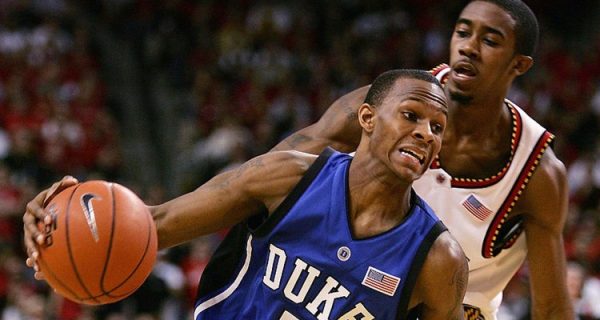A scoring point guard? A combo guard? Which do you prefer..
A combination between a point guard and shooting guard, that’s how the phrase combo guard was coined. While there are a few unique prototypes of a combo guard, they all share the same characteristic and strength: The ability to create offense, for themselves or teammates off the dribble. Being from Houston, I can think of several HIGH MAJOR combo guards. Daniel Ewing, Tommy Mason-Griffin, Daniel Gibson, all 3 McDonald’s Americans.
Combo guards use the dribble as a vehicle to establish their threat to a defense. Whether it’s to penetrate and pitch, score in isolation or push the tempo, all combo guards need a handle that allows them to create offense for themselves or a teammate. To give you guys a little more insight, coach Teddy Wheeler, (coached current Kansas University Freshman CG Quentin Grimes), gives his perspective. “Combo guards are usually not comfortable being the full time primary ball handler. They may need another ball handler to ease the burden of making their teammates better as well as generating quality possessions when time and score matter most. Combo guards is a label sometimes given to younger players as they transition from the two to being a lead guard. CG’s may possess the size of a traditional 1 but the mindset / skill set of a 2. The elite PGs have an awareness and command that may be absent when evaluating combo guards but elite combo guards are no less effective in terms of generating offense. Combo guards usually have one thing in common. Scoring is what they do best regardless of their physical make up.”
On the other side of the coin.. some evaluators & coaches have this take on combo guards. They feel that most combos are low percentage shooters with microwave qualities, which is not ideal for consistent production. Other college coaches have the mind frame that some CG’s have an identity crisis, which causes confusion and in inflated self value.
In my opinion, I guarantee you any coach would LOVE to have & excel playing three combo guards on the perimeter. Three guys that can all pass, handle, and shoot.. WOOOOOOOOO (Ric Flair voice)
And yes, there’s a difference between scoring point guard and combo guard. Chris Paul is a point guard that can score. Kyrie is a scoring point guard, Kemba Walker is a combo guard. Let’s dig a little deeper:
COMBO GUARD
1. Leadership: Usually have to be a leader with his play more so than his mouth.. Which is different than the PG position. BUT… he also has to be an extension of the coach when he’s running the offense & defense. Has to be able to carry the team offensively at times, depending on the scheme of the coach, he has to be an ALPHA.
2. Decision making: He has to be able to be a primary ball handler and make plays for others. Does he understand when it’s time to go score? Or does he understand that he may have to force a couple of shots & know when to take those shots? A combo guard has to understand these nuances.
3. Feel & IQ: Does he know when to score? Does he know when to distribute? Is he always thinking about getting a bucket? Does he understand that his mindset has to change when he’s now essentially the PG. The combo guard is hybrid, he has to be able to know when to get his, & when it’s time to get off the ball. A very tricky, and fine line to walk on, because it will depend on the coach’s style of play. We are in an era where PG’s are the primary scorer, a la Russell Westbrook or Kyrie.
4. Scoring/shooting: Can he score from all 3 levels? Can he shoot it from 3? How efficient is he? A combo guard has to be able to take on the scoring role of a team. Whether he starts or comes off the bench, as a combo, he has to be able to be able to create shots for himself. Good in ISO situations. He also will have to force shots sometimes, as we as coaches have to be OK with that, especially if our system requires him to be our #1 option.
5. Size: Size of combos vary. You may have a 6’5 combo guard or a 5’11 one. With their size they have to be versatile enough to guard either guard spot.
